Developing Marine VR Simulator: Improve Vessel Operations & Safety
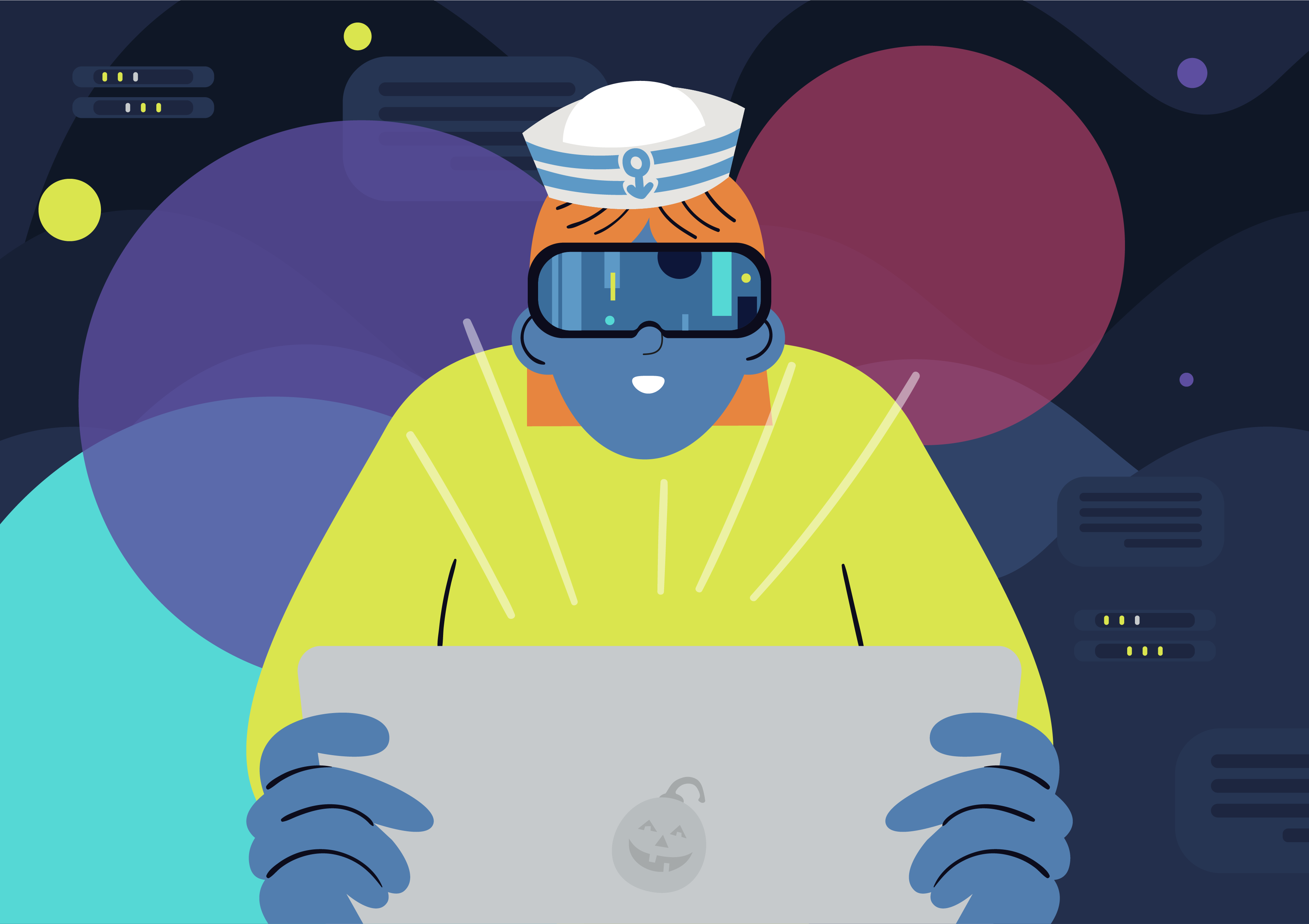
Optimizing vessel operations, providing qualitative training to seafarers and the whole crew, ensuring the necessary security arrangements are the pivotal elements for an effective offshore operation. And this is where VR technology comes in handy.
Nowadays, VR technology is becoming more widely used in various sectors, and one of these is maritime training. Virtual marine simulation is a great way to guarantee successful vessel operations and a high level of safety.
But how can this technology improve vessel operations and safety training? How does the maritime VR simulator work? What features are required for developing a custom marine simulation software?
This blog post aims to show how your maritime business can benefit from a virtual marine simulation, describe the critical features needed to create a custom marine simulation solution and appropriate tech stack. We provide you with real-life examples and hope to demonstrate our Alternative-spaces team exceptional experience. Keep reading to discover more!
Note: All content is based on real-life case studies Alternative-spaces has developed.
How does the maritime VR simulator work?
A maritime simulator or a ship simulator is a modern way to improve your maritime professionals’ skills and gain competence.
Simulator training represents a system that replicates real-life maritime scenarios and vessel behavior, allowing trainees to simulate a marine environment for training and upskilling without the associated risks.

Today virtual marine technology allows for replicating various real-life scenarios from crane handling, towing, and deck machinery to firefighting, boat handling, coast guard, and rescue boats.
VR simulators require using special controllers, VR headsets, and other sensors connected to a smartphone or computer to replicate realistic situations and vessel handling with a degree of realism. These devices allow trainees to interact with objects and other people in 3D environments just as in real life.
Below you can see an example of a maritime VR simulation that allows users to control a wide variety of vessels, fight against realistic water physics, and navigate across various European ports.
So, we discussed the main idea of marine VR simulation and how it works. Now it’s time to figure out what benefits the solution can bring to the maritime business.
What are the benefits of using marine VR simulation?
VR technology gives clear advantages to marine businesses. They are:

High standard of safety
Safety is paramount in the maritime industry. VR simulators contribute to an increased level of safety on the ship simulating accidents and unexpected events without any risk of harm or damage to crew or equipment. Such realistic scenarios aimed to enhance employees’ skills, train them how to act in dangerous cases, and learn from personal mistakes until trainees are entirely comfortable with their tools.
Reducing costs
The traditional marine training process can be quite expensive, including the potential risk of employees’ or equipment damage. Of course, VR implementation also requires an initial investment, but it’s more cost-effective for long-term economic benefits. For example, you do not need to halt production or pay high trainer fees.
Enhanced staff performance
VR technology allows trainees to simulate complex maritime operations, completely replacing the real world. Due to these highly immersive and engaging experiences, employees can practice real-world skills in a safe environment. Marine VR simulation solutions enable trainees to practice real-world challenges repeatedly until they harness their knowledge and tools.
Fast learning process
Marine VR simulation can significantly accelerate the staff training period. According to a recent study, learners trained using VR solutions completed their training four times faster than traditional classroom training and e-learning.
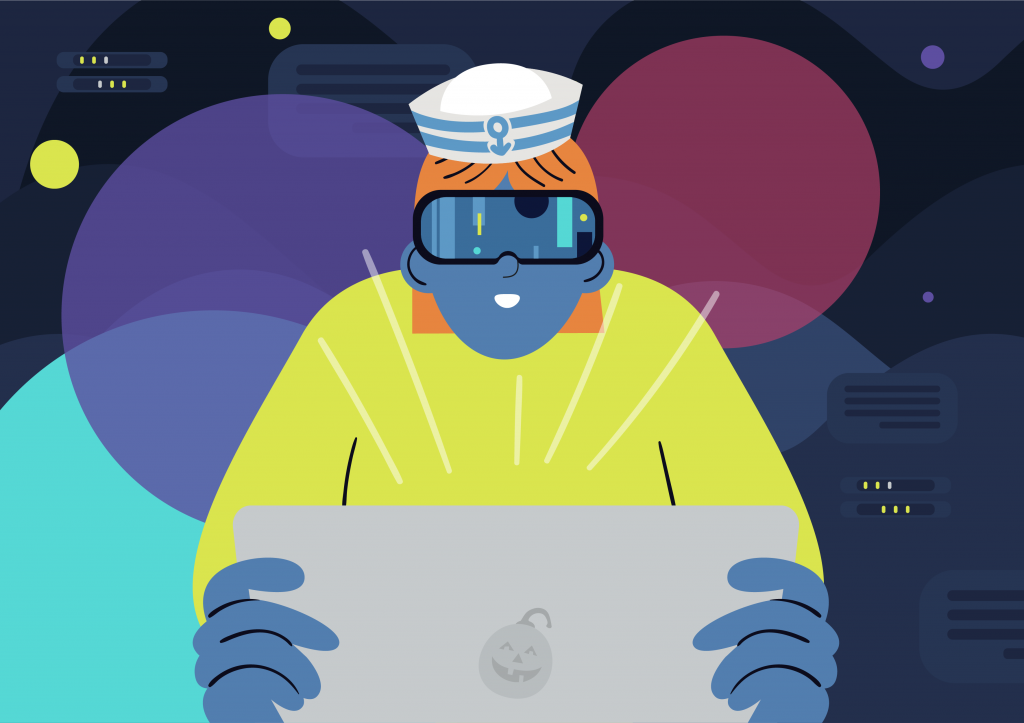
Objective assessment of trainees performance
Maritime VR simulation represents a convenient system that effectively monitors how trainees perform tasks and objectively and accurately assess employees’ results.
Marine training flexibility
Marine VR solution provides a fully immersive experience for both individuals and groups. Moreover, trainees do not need to be in the same room. A shared VR simulation allows marine businesses to train their crew anywhere and at any time without sending them to a training facility. Also, marine training flexibility provides an opportunity to change scenarios or add necessary objects.
Considering those mentioned above, we can say VR technology offers immense prospects for vessel operations and maritime business as a whole.
But how do maritime VR simulators work in practice? Let’s consider various types of marine solutions and see how your business can leverage VR technology.
What are the types of maritime VR simulators? (Real examples)
Maritime VR simulation for firefighting training
This type of maritime VR simulator allows the crew to practice their skills in firefighting.
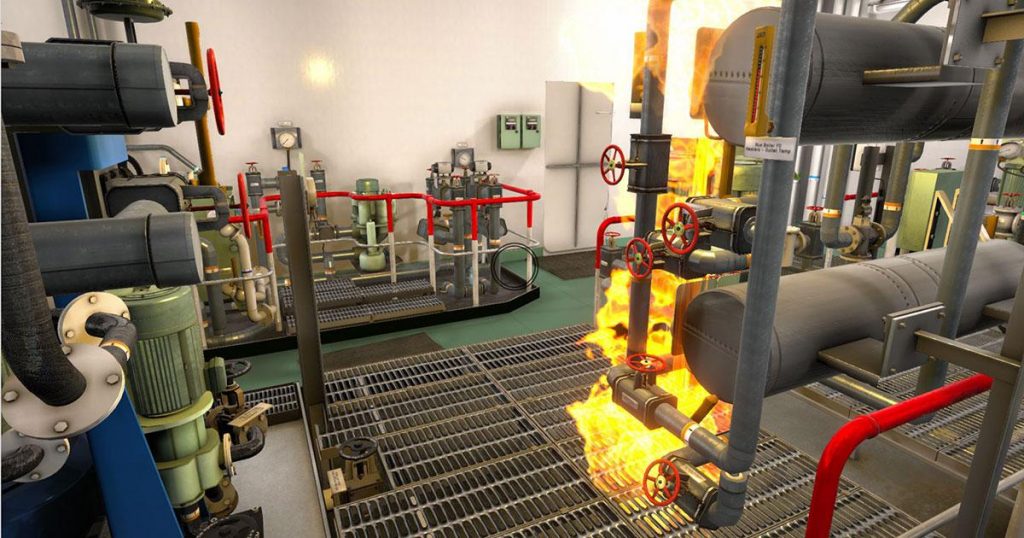
3D virtual environment and VR technology simulate fire on board allowing seafarers experience a real-life accident. During this training, employees learn how to assess the situation under stress accurately and how to deal with fires effectively.
Below you can see an example of a simulation system, K-Sim Safety, that aims to train employees to manage fire on board. Check out the video below.
Simulator for rescue craft training
Such a simulator allows learners to train their navigation and pilotage skills and improve their search and rescue operations skills.

Rescue craft simulation provides trainees with various training scenarios, including time of day and different weather conditions. Below you can see an example of a rescue craft training in action.
VR lifting simulator
VR lifting simulators allow operators to train in a multitude of scenarios without running risks. Offshore crane VR training will enable trainees to simulate lifting experience and handling material such as raw materials, containers, large equipment, etc.

Simulator for navigation training
The navigation simulator allows seafarers to learn waterway traffic regulations and how to navigate ships to avoid collisions. Trainees can try a variety of vessels (such as passenger ships, cargo vessels, etc.) and experience various geographical training areas in different weather conditions.
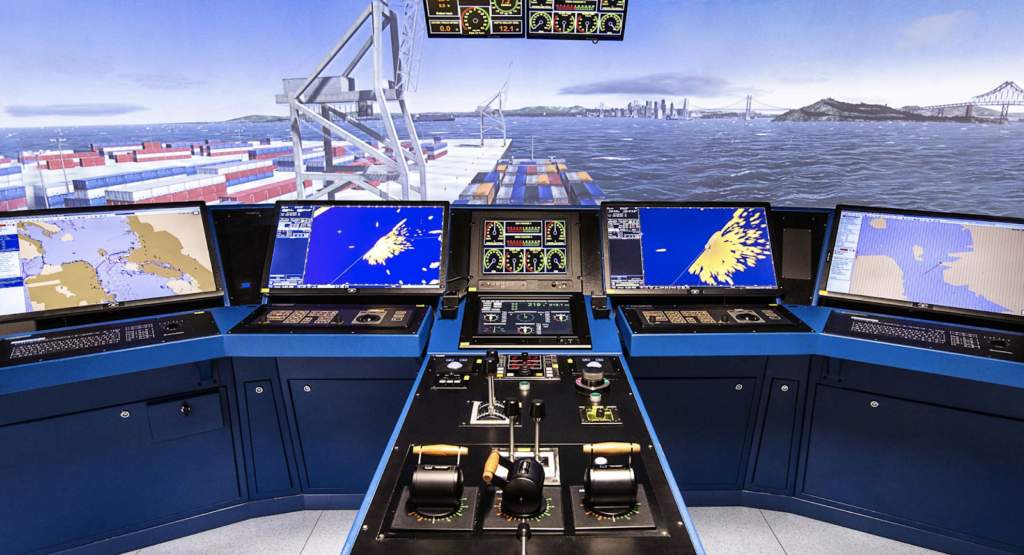
To show you how a VR navigation simulator works, let’s look at a real example. Below you can see the maritime simulator that allows learners to train their skills in navigation for every scenario possible and, as a result, enhance maritime safety.
VR simulator for fishing
VR simulators provide excellent cost-effective and safe fishing training. A fishing simulator allows trainees to simulate fishing operations such as longlining, bottom, and pelagic trawling, jigging, etc.
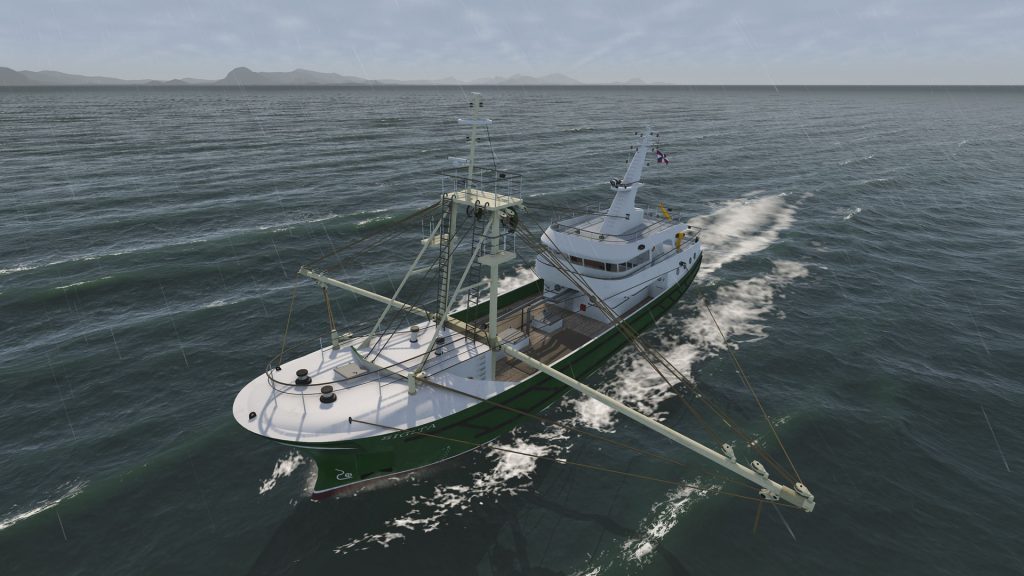
The fishing VR simulator may include a realistic simulation of dynamics from nets, tackles, booms, and winches. Moreover, learners can train how to act when something happens with nets or fish schools using a fishery panel and a 3D underwater view. To see the fishing VR simulator in action, below we provide you with a video demonstrating a real-life example, the NAUTIS fishing simulator.
How to develop a marine operations VR simulator
Now that you know what a marine VR simulation is all about, it’s time to consider developing this solution. Below we describe some essential stages you should include in your development process.
Specifying clear project requirements
The process of maritime operations simulation development should start with an understanding of the main idea of your project and determining its requirements. Solid project requirements give a clear picture of the work that should be done. And this vision is a key to defining future steps for achieving needed results.
For example, at Alternative-spaces we start our marine VR simulation software development with a product discovery stage. This stage allows us to determine project complexity and features to develop, test the market viability, establish deadlines, and plan a project. The product discovery phase enables us to organize smooth and timely product development and stay on the same page with our clients.
Designing marine simulator and VR app content
VR design implies creating a simulated world in which users can immerse and experience real-world challenges with the use of special hardware such as VR headsets and controllers.
Depending on your marine VR simulator type and your needs, you can create numerous training scenarios. Generally, a VR simulator’s design may include the following elements:
- 3D environments that should look as natural as possible
- Various virtual characters with which learners will interact
- Animated images that make the user experience more realistic
- 360-degree videos and special sound effects that provide deeper immersion
We’ve just covered the most common content for a marine VR simulator. But it all depends on your project requirements and needs, so developers and designers can add all elements you need.
Defining must-have features of maritime VR simulation
Your set of functionalities directly depends on the type of a marine VR simulator that you choose, whether it’s a navigation solution or firefighting training solution. Below we’ve listed a basic set of features required to build a maritime VR simulation.
For a maritime VR simulation development, you’ll need three modules: VR app, admin panel, and cloud storage:
- VR app is responsible for performing training sessions and handling received data. This module runs in-app video streaming and creates audio and visual feedback for hardware as VR headsets, speakers, and controllers. With the help of this module, you can ensure gesture-controlled interactions to make more realistic conditions for learners. Furthermore, the VR app provides virtual 3D characters allowing trainees to communicate with them during the session.
- Admin panel allows managing training scenarios and users’ profiles. For example, having this module, you will create users’ accounts containing their personal data, accomplished training programs, metrics, etc. Also, you can add, change, and remove VR training scenarios and schedule new training sessions. Moreover, you can track trainees’ performance using an analytics feature that automatically assesses learners’ effectiveness and shows their results in the dashboard.
- Cloud storage involves databases that allow you to store users’ information, training programs, and VR simulator content such as 3D models, audio, video, visual assets, etc.
Choosing VR headsets
To enable your trainees to interact with your simulator content, you’ll need VR headsets. Today, there is a wide variety of VR headsets you can choose from. Here are some of the famous companies that offer various choices:
- Oculus: Oculus Quest 2, Oculus Quest 1, Oculus Rift, Oculus Rift S
- Samsung: Samsung Gear VR, Samsung HMD Odyssey
- HTC: HTC Vive Cosmos, HTC Vive Pro, HTC Vive
- Pico Interactive: Pico Neo 2, Pico G2 4K, Neo 3 Pro/Pro Eye
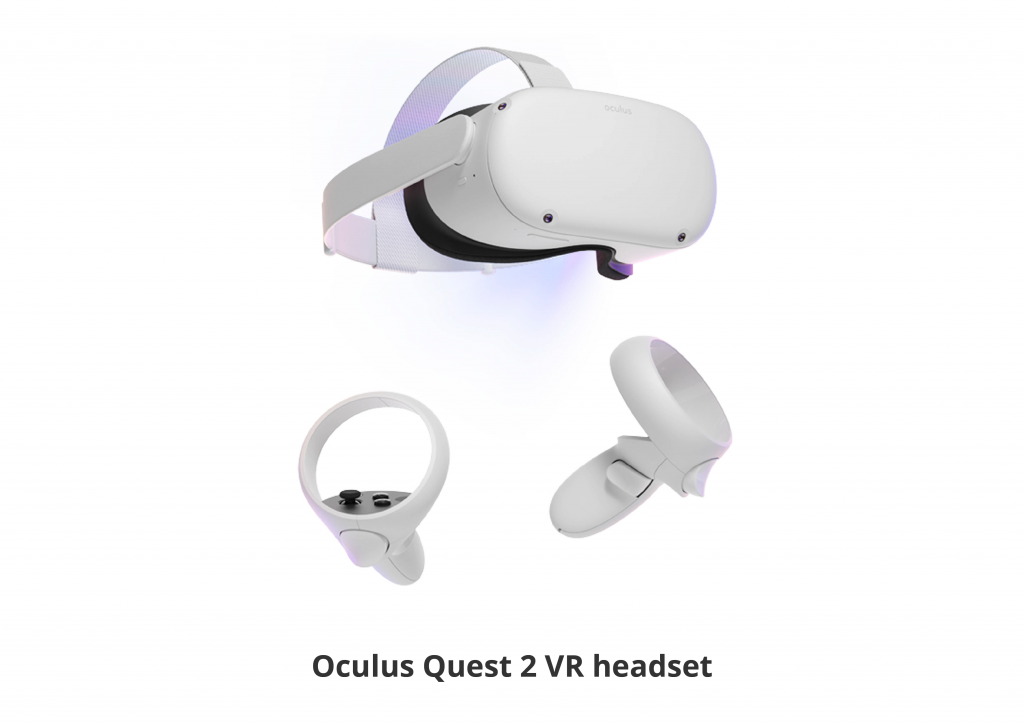
Selecting the right tech stack
The choice of technologies is an important and responsible step. Every programming language, library, and tools have their own pros and cons. And, therefore, the chosen technologies affect your product’s scalability, security, maintainability, development time, and costs.
Our experts have prepared a table that provides a recommended tech stack to use for a ship simulator development.

Alternative-spaces experience
As a leading development company, the Alternative-spaces team has experienced VR and AR professionals who can help you build top-notch and high-quality VR simulator solutions. Our specialists work with AR, VR, MR, web, games, 2D/3D design, and know-how to develop appealing and engaging content. In this section, we will share our experience with you in developing a maritime VR simulator.
The Aalternative-spaces team built a marine VR simulator game that considers water physics and AHTS vessel architecture.

The main concept of this marine simulator is to steer the ship to the oil rig, avoid traffic, extinguish any fires using the water guns, and keep the vessel within the marked area for 10 seconds. The captain uses a Vive controller managed as a “joystick” to interact with bridge controls. We’ve designed a smooth VR user experience and a completely immersive virtual reality. Just see for yourself in the video below!
As a result, our VR experts have created realistic computer graphics, true-to-life water physics, real ships, water cannons, live seagulls, and completely immersive virtual reality.
Furthermore, this VR simulator had great success during the display at CeBit 2017.
Ready to make a major step forward in improving your vessel operations and safety?
Maritime businesses have quickly realized the immense advantages that VR technology can offer and will not stop leveraging it.
VR simulators allow you to address critical maritime training challenges, enhance vessels operations by preparing seafarers for the conditions and practical challenges they will face in the real world, and develop technology-based maritime safety education apps.
And the most critical, virtual configurable equipment matches 100% of the real world. This allows your trainees to gain practical, hands-on experience in a risk-free environment.
Would you like to dramatically enhance your vessel operations and reach a high level of safety with a progressive VR solution? Please don’t hesitate to get in touch with us, and our experts will create a truly immersive marine experience for your trainees.
Content created by our partner, Onix-systems.
 Home
Home